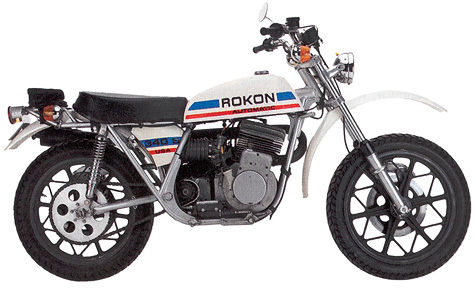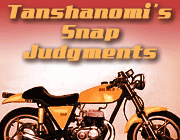| 1975–76 Rokon ST-340 |
|---|
| Performance |      |
|---|
| The Sachs snowmobile engine was fairly capable for its size, and reasonably predictable and responsive. However, given what else was available on the market at the time, it was pretty unremarkable overall. Tuning the carburetor was a challenge, since no one setting seemed to work in all situations. The belt-and-pulley CVT transmission was actually a big advantage 80–90% of the time, but the resulting lack of engine braking spooked riders, and the belt slipped when wet (very wet, as in mud bogs and during water crossings). Worst of all, power to the back wheel was not always there when riders desperately needed it in gnarly situations and over tough-to-climb obstacles. The nature of the passive-response CVT meant that there was nothing that riders could do about it. |
|
| Handling |      |
|---|
| The chassis felt top-heavy in tight off-road situations and the awkward transmission bulge on the left side made the whole bike feel wider and more cumbersome than it actually was. The CVT transmission worked well enough on the street, but highway speeds demanded better brakes than the Rokon's crude, fade-prone discs. |
|
| Looks |      |
|---|
| It looked like the cobbled-together, under-funded experiment it was. |
|
| Reliability |      |
|---|
| The pioneering disc brakes were not ready for prime time and required constant attention. (The factory switched to silicone-based brake fluid late in production, which helped prevent moisture buildup and internal corrosion, but made the brakes feel even spongier.) The engine was not prone to seizing, but components were not well finished and corroded fairly quickly. |
|
| Practicality |      |
|---|
| The ST was clearly just a dirt-bike with lights; suspension rates and gearing was ill-suited to street duty. But at least it had turn signals, unlike the earlier street legal kit for the RT enduro bike. The need to pull-start the engine turned potential customers off, even though it was really not hard to start. |
|
| Desirability |      |
|---|
| The idea of a CVT dual-sport bike fascinates me, but I'd build my own rather than suffer the inadequacies of the homely Rokon. |


